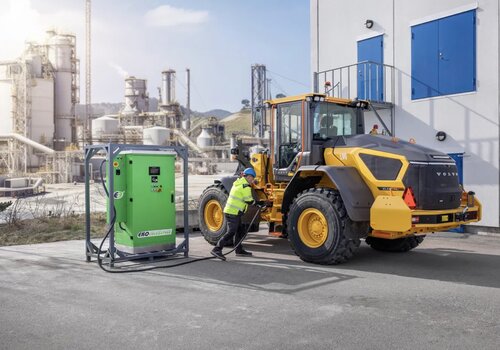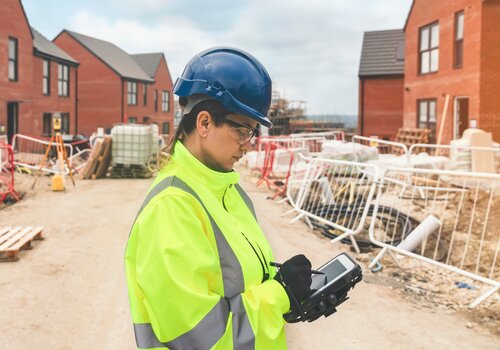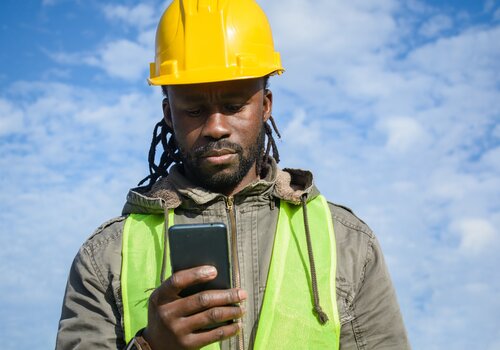On or off the jobsite, connectivity isn’t just a luxury—it’s a necessity. Whether you're coordinating deliveries, reviewing blueprints or just trying to send a simple email, reliable internet and communication tools keep the job moving. But honestly, many remote construction sites feel like they exist in a black hole of connectivity, where dropped calls and slow Wi-Fi can bring work to a frustrating halt.
So, how do you ensure your team stays connected, no matter where the job takes you? Here are some practical strategies to keep your site online, your communication flowing and your project on track.
1. INVEST IN A STRONG MOBILE NETWORK SOLUTION
If you're working in an area with spotty reception, relying on a basic phone signal won’t cut it. That’s where mobile network solutions come into play. You’ve got options:
- Cellular Signal Boosters: These devices amplify weak signals, improving call quality and data speeds in remote areas.
- Portable Hotspots: A good hotspot can be a lifesaver when Wi-Fi is nowhere in sight. Opt for models with strong antennas and 5G capability for maximum coverage.
- Multi-SIM Routers: These types of routers connect to multiple carriers, automatically switching to the strongest available signal.
Before choosing a solution, check coverage maps from different providers. Sometimes, switching carriers can be the easiest fix.
2. LEVERAGE SATELLITE INTERNET FOR DEAD ZONES
When traditional cellular networks fail, satellite internet can be a reliable alternative. Companies like HughesNet offer solutions specifically designed for remote locations.
- Pros: Works anywhere with a clear sky view, decent speeds for job-site needs.
- Cons: Setup costs can be high and latency might not be ideal for real-time tasks like video calls.
If your site is truly off-grid, satellite might be the best bet for maintaining steady connectivity.
3. SET UP A DEDICATED SITE NETWORK
A well-planned network ensures consistent access across the entire worksite. Consider these steps:
- Install Wi-Fi Access Points: These extend coverage throughout the site, especially helpful for large or multi-building projects.
- Use Wired Connections When Possible: Fiber or Ethernet connections offer more reliability than wireless solutions.
- Ensure Secure Access: Set up Virtual Private Networks (VPNs) or encrypted networks to protect sensitive project data.
Planning ahead and deploying the right infrastructure reduces frustrations and downtime.
4. OPTIMIZE COMMUNICATION TOOLS FOR LOW CONNECTIVITY AREAS
Even with the best internet, issues happen. The key is having backup communication methods in place:
- Offline Messaging Apps: Some platforms, like Bridgefy or Briar, allow basic text messaging even when the internet is down.
- Two-Way Radios: Classic, reliable and perfect for quick on-site communication.
- Preloaded Digital Files: Keep essential documents like plans and schedules saved locally, so the team isn't stuck waiting for downloads.
Having multiple ways to communicate keeps the workflow smooth, even in connectivity dead zones.
5. TRAIN YOUR TEAM ON BEST PRACTICES
Even with top-tier technology, poor handling can cause connectivity problems. Make sure your crew knows how to:
- Manage Bandwidth: Large downloads or unnecessary streaming can slow the whole network.
- Position Equipment Correctly: Signal boosters and hotspots work best when placed away from metal structures or interference.
- Troubleshoot Common Issues: Teaching simple fixes—like resetting devices or checking for outages—prevents unnecessary delays.
A little tech-savviness goes a long way in keeping the site running smoothly.
Reliable connectivity isn’t just about making life easier—it’s essential for efficiency, safety and communication on the job. By investing in strong mobile network solutions, leveraging satellite internet when needed, setting up proper site networks and ensuring your team knows how to optimize tech use, you can keep your construction site online and operational.
Construction doesn’t stop because of weak signals, and with the right setup, neither will your team. Dive into our articles for more tips and strategies to keep your projects running smoothly. Share this article with your team and start the conversation about maintaining reliable connectivity on remote construction sites. Let's stay connected and keep building together!
Photo credit: SHUTTERSTOCK.COM/RAWPIXEL.COM












